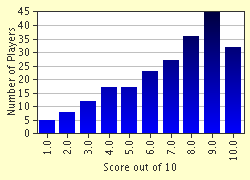Quiz Answer Key and Fun Facts
1. This species of bird was the only parrot native to the eastern United States. It was considered a pest to farmers and this was one of the reasons it was hunted to extinction.
2. There were estimated populations in the billions of these pigeons in the days of Colonial America. Migratory flights were sometimes said to be about a mile wide and may have taken several hours to pass.
3. This sparrow relied on a cordgrass habitat. Cordgrass only grows on a narrow strip of land near the shore. The building of the Kennedy Space Center and its infrastructure may have destroyed much of the birds' habitat in Florida.
4. This bird is the largest species of woodpecker in the United States. It had not been seen since the 1960s and therefore was presumed to be extinct. In 2005, it was reported in Arkansas.
5. This bird was related to the prairie chicken and was (before the American Revolution) found from Maine to Virginia. The bird was found to be edible and was easy prey for hunters. This "chicken-like" bird became extinct in the 1930's.
6. Large breeding colonies of these birds were seen along the Atlantic coast. A flightless seabird, it was known to be a strong swimmer. In many ways it resembled a penguin.
7. This bird's morphology suggests it fed on shellfish and crustaceans in shallow water. Its breeding grounds were believed to be from the Gulf of St. Lawrence, Labrador and north. It wintered on the Atlantic coast.
8. This parrot was a native to the southwestern United States. As most parrots, it fed on fruit. It became a pest to farmers as it regularly foraged in cultivated areas and orchards. The bird was about 12 inches long and was seen in flocks of several hundred birds.
9. This was a cavity-nesting bird and could be found in the desert. It was native to a very small area of California.
10. This bird was known to nest in the fields of Texas. The nest was built in tall grass and (similar to the ovenbird) often had a roof on it.
Source: Author
egstrasser
This quiz was reviewed by FunTrivia editor
crisw before going online.
Any errors found in FunTrivia content are routinely corrected through our feedback system.

